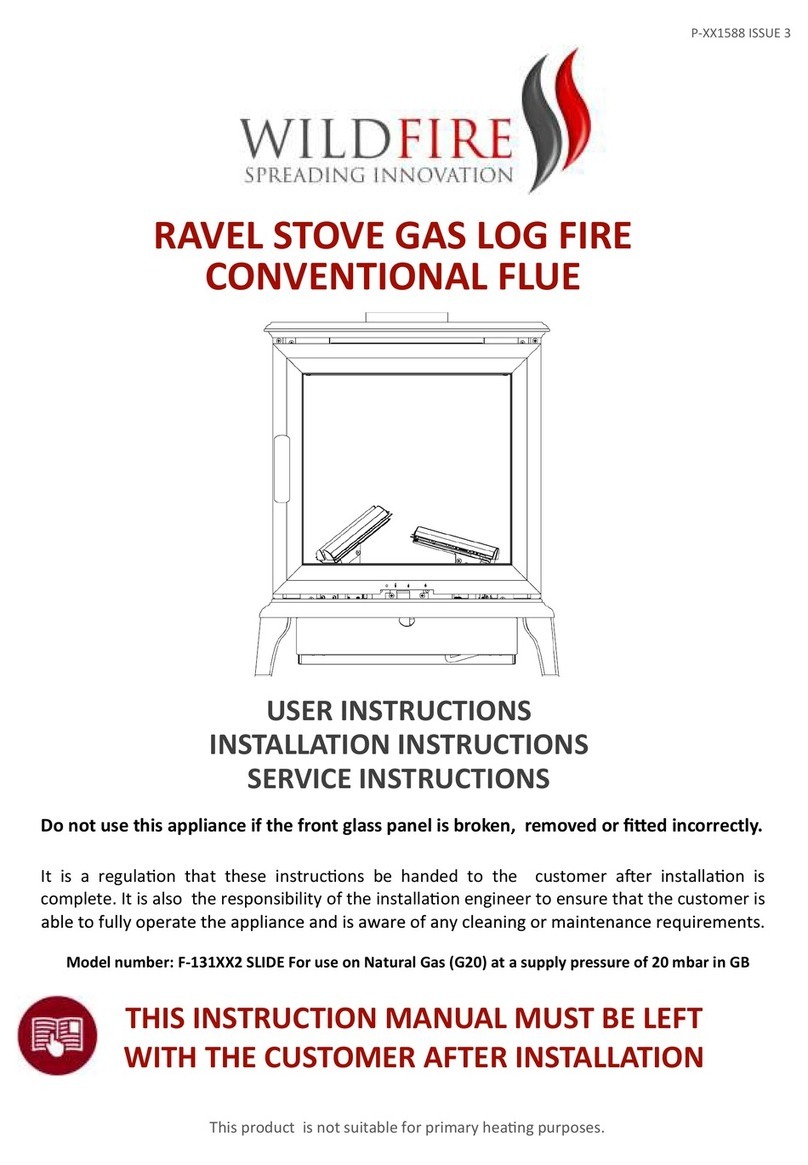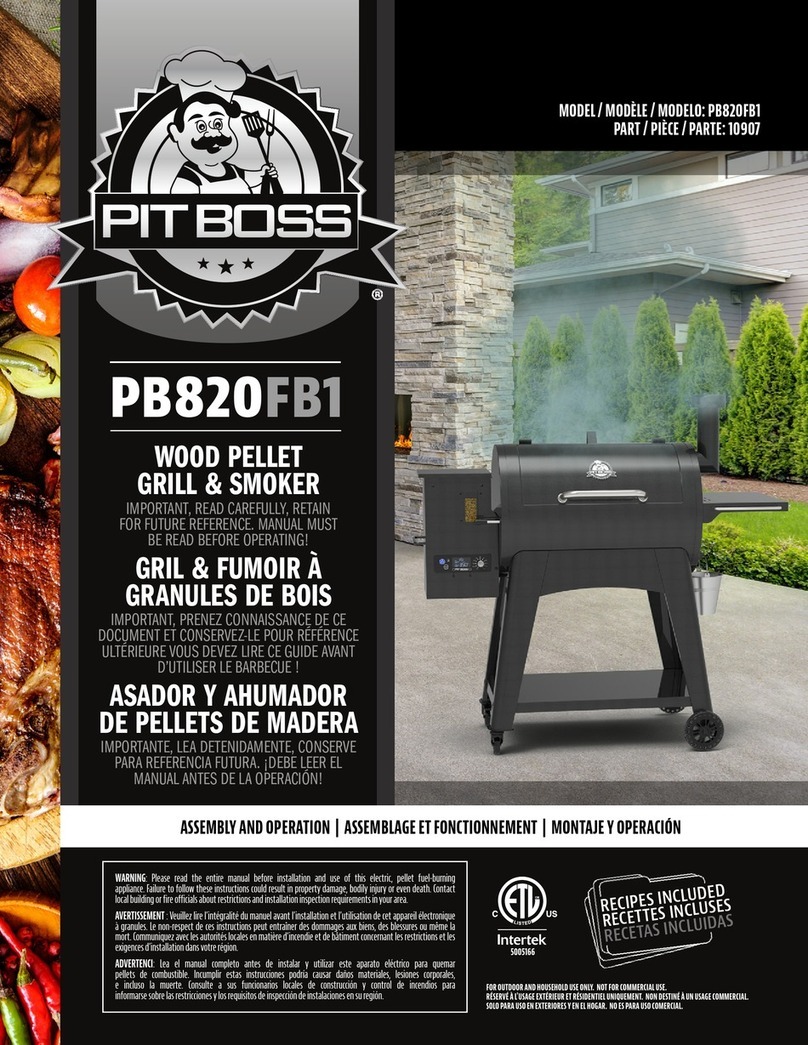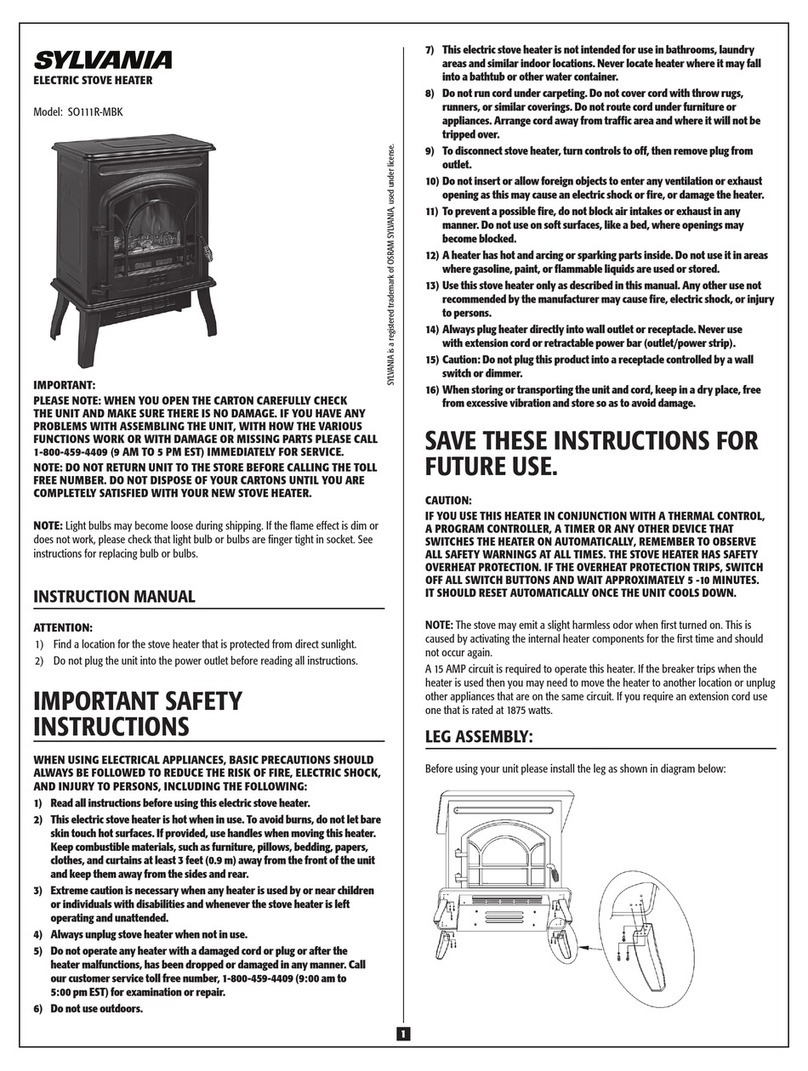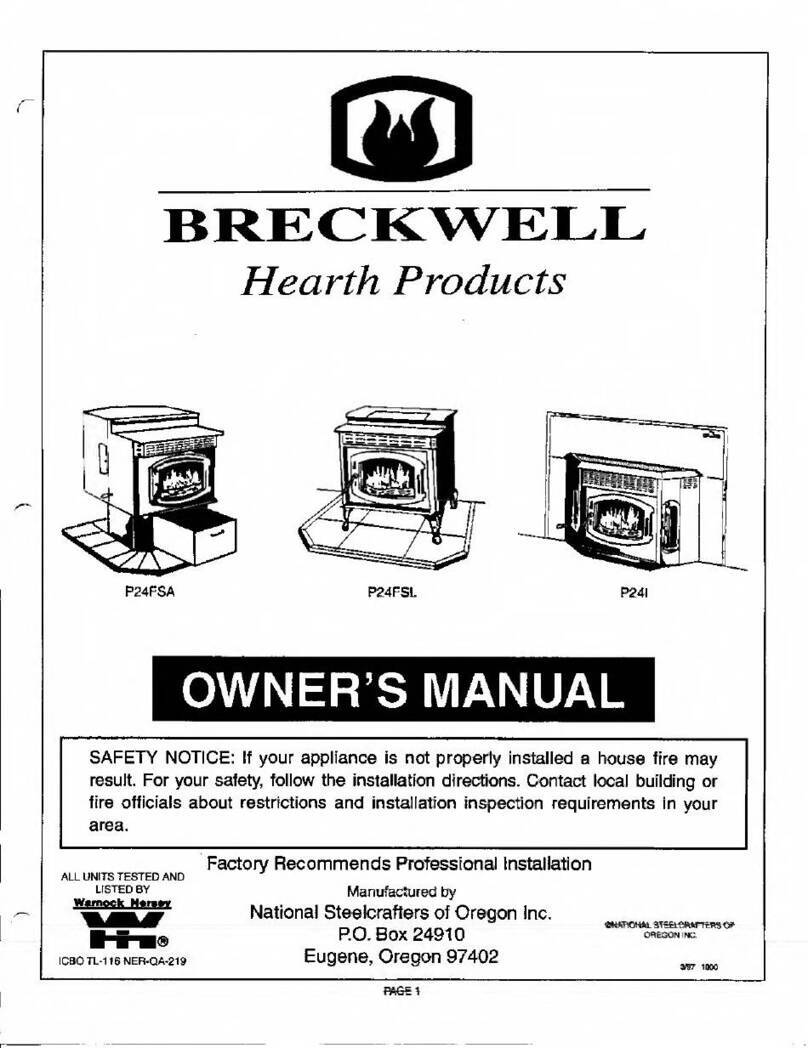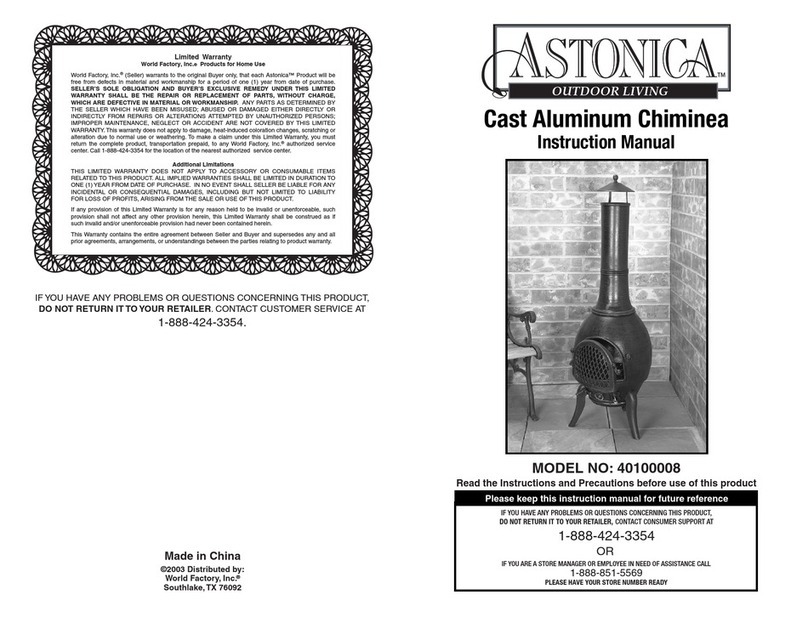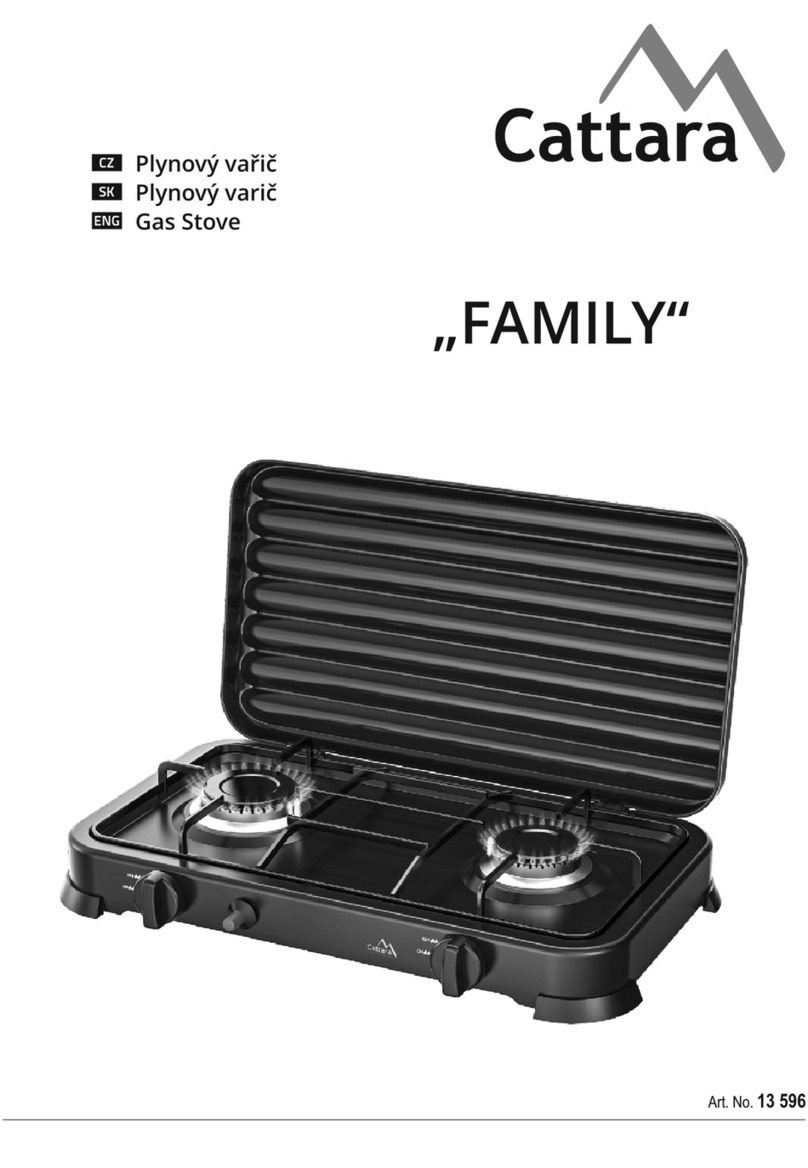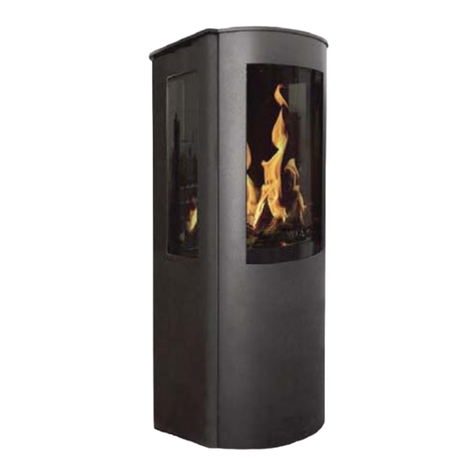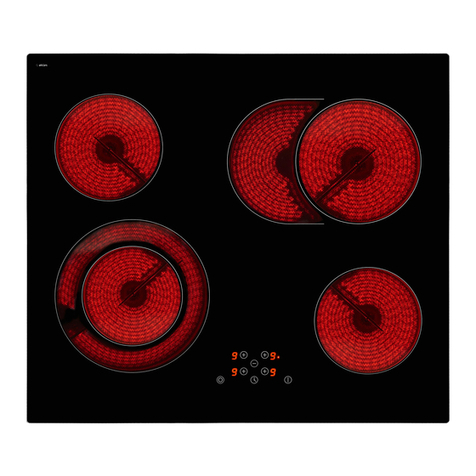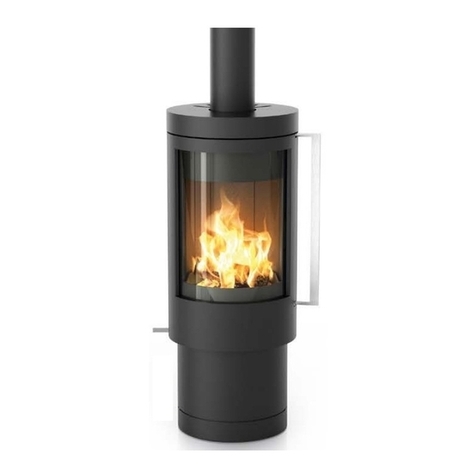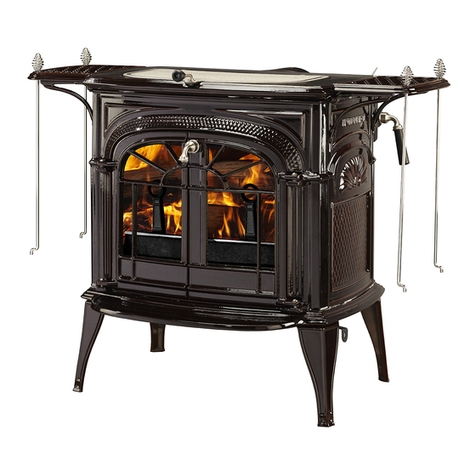4. Stove Lighng and Operaon
Before lighng the stove:
Recommended fuel: Use small, dry scks or lumber scraps for best performance. 1-1.5 in. (2.5-4 cm) diameter is ideal.
Use straight scks, when possible, and break o any twigs in order to maximize self-feeding eecveness.
Avoid burning salt water dri wood, as this will increase corrosion of the stove internals.
Never burn pressure treated lumber. Toxic fumes are emied.
Folding fuel chute posion: Make sure that the fuel chute is fully open and is resng above the lip of the stove’s fuel feed
entrance to help make sure that scks feed in smoothly.
Lighng the stove:
1. Remove the ash tray and arrange nder/kindling inside it.
Fire starng liquid or gel may be used.
2. Place scks into the fuel feed of the stove.
The scks should be spaced about 3/8 in. (1 cm) apart from each other for quick lighng.
3. Light the re in the ash tray and fully re-insert it into the stove (beneath the scks) once the re is burning strongly.
WARNING: Make sure that there is always water or cooking oil in your pot, pressure cooker, or autoclave when stove is lit.
Never burn them dry, or the heat from the re, which can exceed 1800°F (1000°C), can destroy them and the stove.
CAUTION: If the stove does get wet, allow it to dry completely before lighng (this may take several days).
If lit while wet, the stove will consume extra wood while drying, burn cooler, and corrode much faster than normal.
NOTE: Remove cardboard spacers holding the re grate and ash tray in place before lighng your stove for the rst me.
Tending the re:
Controlling repower: Firepower can be controlled by adding or removing scks unl the desired repower is achieved.
The stove will self-feed relavely smooth, straight scks into the re at a fairly constant rate.
Adding more fuel: To avoid a surge in the re when adding more wood, place the ps of new scks against the end of the
scks currently burning so that they help to push them into the re at a constant rate before burning, themselves.
NOTE: Make sure that scks rest on the boom surface of the stove’s fuel feed. If they are so long that they tend to p back
out of the stove, they will not self-feed correctly.
Over-feeding/over-ring: Do not stu the rebox full of wood.
This will decrease the quality of the burn and lifespan of the stove with minimal increase in repower.
If the stove produces visible smoking while burning dry wood, it is being over-fed.
3. Stove Placement and Storage
Placement while in operaon:
To ensure safety and maximize lifespan, never operate your stove:
On ammable surfaces such as wood oors, grass or brush, etc. The boom of the stove may exceed 400°F — hot
enough to char or ignite these materials.
The stove can be safe to use over wood ooring if elevated at least 6 inches (0.2 m) above the oor. (This does not in-
clude sealed hardwood, veneers/composites, carpeted wood oors, or other products with plasc/coangs.)
Near ammable or combusble materials like re starng uid, curtains, tent walls, etc.
Make sure the sides of the stove and chimney are at least 18 in. (0.5 m) away from ammable structures and materials.
Make sure that combusble/inammable items such as gasoline, re starter uid, etc. are kept far away from the stove.
In the rain or while wet. The combinaon of water and high heat will cause the stainless steel internals to corrode.
On uneven surfaces. Hot liquid may spill out of the pot.
In enclosed spaces—unless the chimney is routed to the outdoors with an approved chimney thimble.
Even if no smoke is visible, the stove sll emits toxins including carbon monoxide.
Storage:
Always store the stove in a dry place. If you live near the ocean, make sure that it is not exposed to salt spray/dew.
Always allow the stove to cool completely before storage.
Make sure that any food residue is removed before storage to prevent corrosion.
NOTE: This stove is not cered by the US EPA or Canadian CSA as a residenal heater. You are responsible for
ensuring that installaon and usage of your stove are in compliance with all applicable codes and regulaons.





